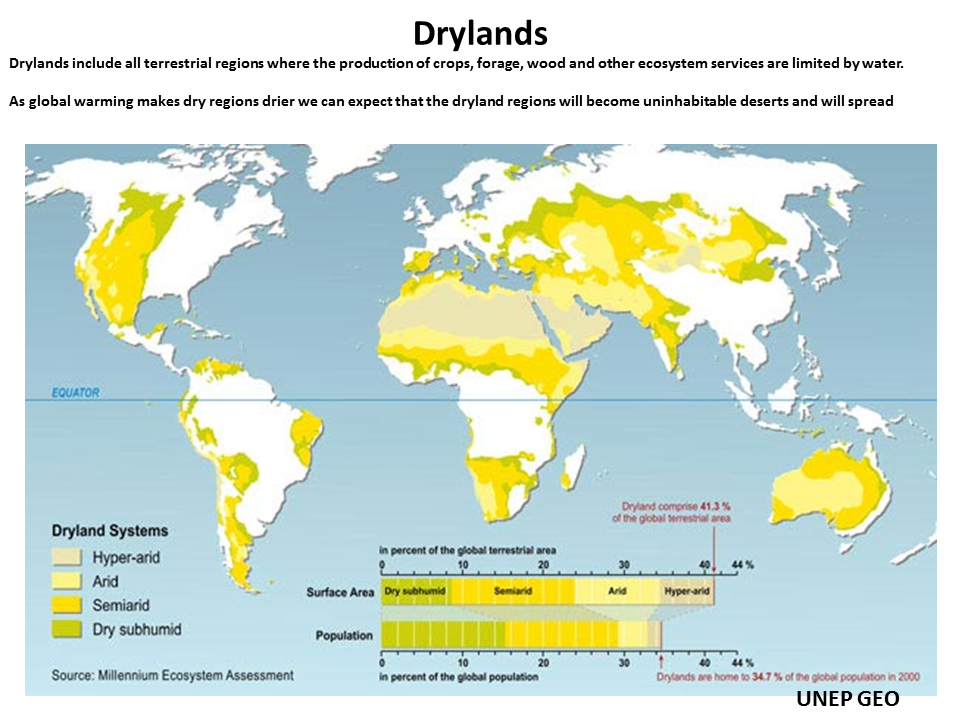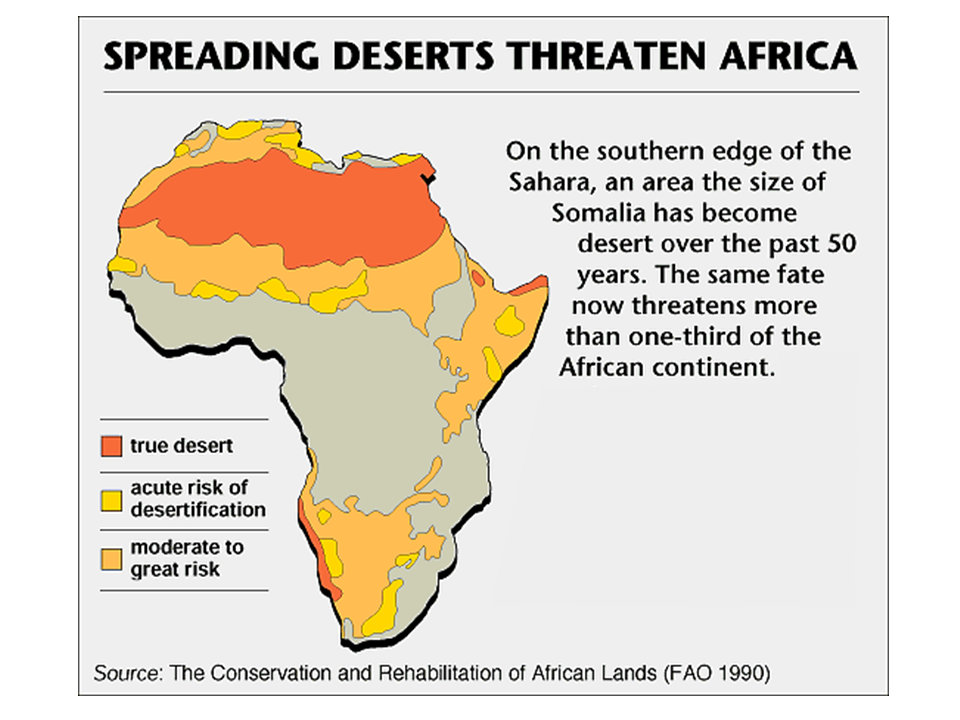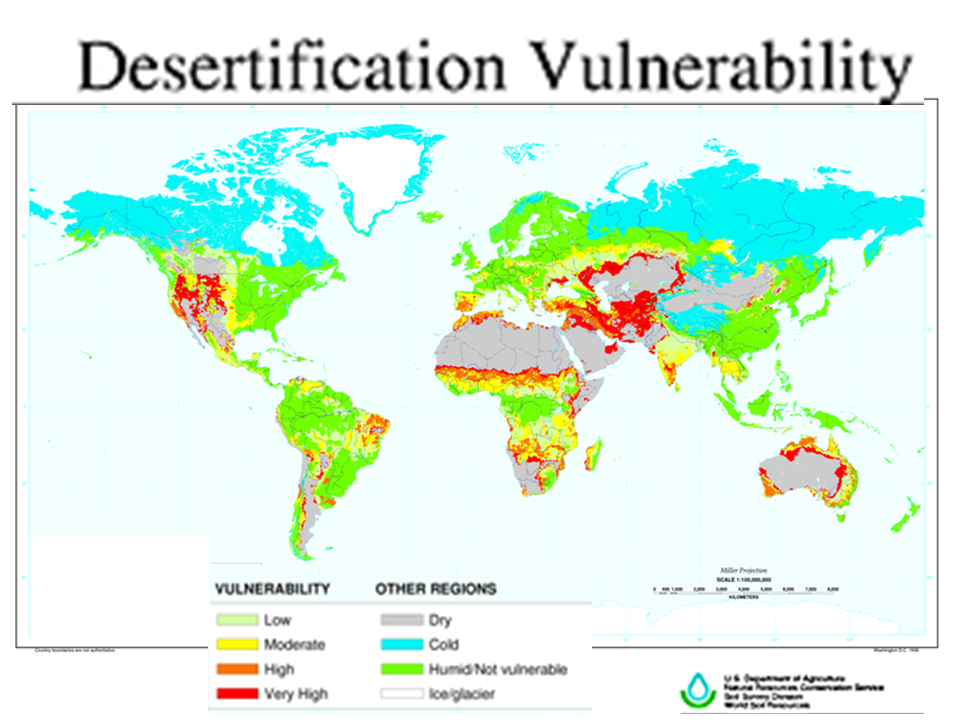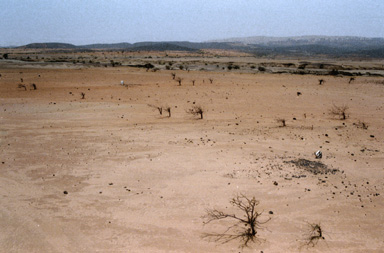
Climate Change Food Security
Desertification
Desertification
The IPCC predicts that world drought will increase due to global warming, which will increase desertification.
Deserts are likely to experience more episodic climate events, and interannual variability may increase in future, though there is substantial disagreement between GCM projections and across different regions (Smith et al., 2000; Duraiappah et al., 2005). Continental deserts could experience more severe, persistent droughts (Lioubimtseva and Adams, 2004; Schwinning and Sala, 2004). Vulnerability to desertification will be enhanced due to the indicated increase in the incidence of severe drought globally (Burke et al., 2006). In the Americas, temperate deserts are projected to expand substantially under doubled CO2 climate scenarios (Lauenroth et al., 2004). IPCC AR4 2007 WG2 4.4.2
Deserts are likely to experience more episodic climate events, and interannual variability may increase in future, though there is substantial disagreement between GCM projections and across different regions (Smith et al., 2000; Duraiappah et al., 2005). Continental deserts could experience more severe, persistent droughts (Lioubimtseva and Adams, 2004; Schwinning and Sala, 2004). Vulnerability to desertification will be enhanced due to the indicated increase in the incidence of severe drought globally (Burke et al., 2006). In the Americas, temperate deserts are projected to expand substantially under doubled CO2 climate scenarios (Lauenroth et al., 2004). IPCC AR4 2007 WG2 4.4.2
Drylands occupy approximately 40–41% of Earth’s land area and are home to more than 2 billion people. It has been estimated that some 10–20% of drylands are already degraded, the total area affected by desertification being between 6 and 12 million square kilometres, that about 1–6% of the inhabitants of drylands live in desertified areas, and that a billion people are under threat from further desertification.
The Sahara is currently expanding south at a rate of up to 48 kilometers per year.
The Sahara is currently expanding south at a rate of up to 48 kilometers per year.

There are about 7.1 million km2 of land under low risk of human-induced desertification, 8.6 million km2 at moderate risk, 15.6 million km2 at high risk, and 11.9 million km2 under very high risk. A major cause of desertification is poor land management.
NRCS Global Desertification Tension Zones Hari Eswaran.
NRCS Global Desertification Tension Zones Hari Eswaran.



